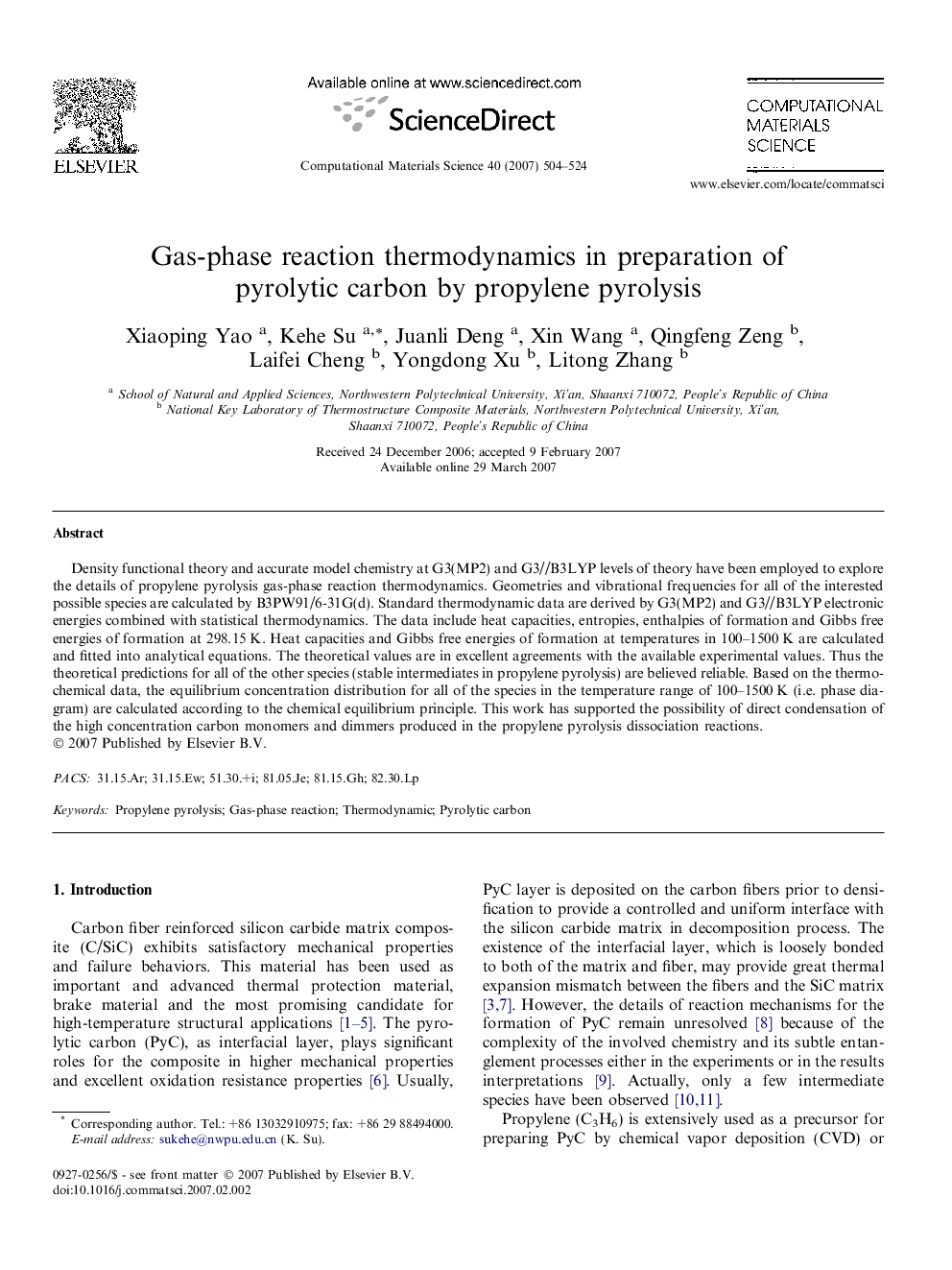| Article ID | Journal | Published Year | Pages | File Type |
|---|---|---|---|---|
| 1563672 | Computational Materials Science | 2007 | 21 Pages |
Density functional theory and accurate model chemistry at G3(MP2) and G3//B3LYP levels of theory have been employed to explore the details of propylene pyrolysis gas-phase reaction thermodynamics. Geometries and vibrational frequencies for all of the interested possible species are calculated by B3PW91/6-31G(d). Standard thermodynamic data are derived by G3(MP2) and G3//B3LYP electronic energies combined with statistical thermodynamics. The data include heat capacities, entropies, enthalpies of formation and Gibbs free energies of formation at 298.15 K. Heat capacities and Gibbs free energies of formation at temperatures in 100–1500 K are calculated and fitted into analytical equations. The theoretical values are in excellent agreements with the available experimental values. Thus the theoretical predictions for all of the other species (stable intermediates in propylene pyrolysis) are believed reliable. Based on the thermo-chemical data, the equilibrium concentration distribution for all of the species in the temperature range of 100–1500 K (i.e. phase diagram) are calculated according to the chemical equilibrium principle. This work has supported the possibility of direct condensation of the high concentration carbon monomers and dimmers produced in the propylene pyrolysis dissociation reactions.
